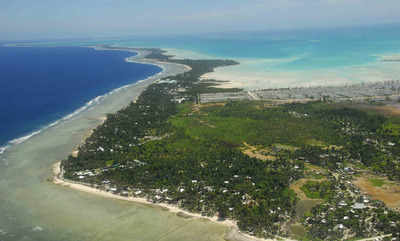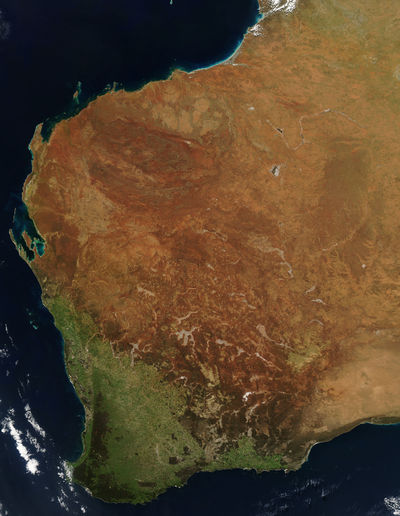Guns, mines and LTE
LTE is quietly gaining a foothold in non-traditional areas. To learn why, we spoke with Simon Lardner from Challenge Networks and found out why his teams sometimes have to be accompanied by armed guards packing Uzis.
Which technology is best for your critical communications circumstances? Is it TETRA, P25, dPMR, DMR, LTE? In many cases the choice might be obvious, but in others not so. According to some, LTE - traditionally a consumer-orientated technology - could be the elephant in the room.
Challenge Networks has installed 2G, 3G and LTE mobile phone networks across the Pacific and is now moving into the mining sector in Australia.
Lardner will present a case study on LTE for major resources projects at the Comms Connect conference in Melbourne in November. He’ll also take part in one of the workshops (mobile broadband and LTE for critical communications) the day before the conference begins.

What sort of work does Challenge Networks do?
Historically, we’ve built mobile phone networks for typically small countries, such as islands in the Pacific - Fiji, Vanuatu and so on. We are probably one of only two companies in the world that does that; it’s fairly specialised.
We’re now moving more into the mining segment, which kind of makes sense - mines are like very small countries, like an island I guess. They’re typically in the middle of nowhere, often with reasonably difficult climatic conditions. So we’ve gone from being in traditional carrier networks and now moving into the mining segment. And my presentation will be on some of the challenges you have in building small networks.
So what are some of those challenges?
It’s mainly about money. Anyone can develop anything - it’s making it cost-effective that is the key thing. But the mining segment does have some specific needs. Most mobile networks, in the LTE type of space, at the end of the day are still designed for consumers. They’re not exactly designed for true industrial applications.
The trick is to get what is historically a consumer network to work in an industrial sense, and that’s mainly about reliability and ruggedness.
So you only handle LTE? You don’t get into TETRA or other systems?
No, we’re very specifically in the LTE space. We’re not an IT company and we’re not a comms company in the TETRA, P25 sense. We’re essentially a telecoms company that is jumping market segments a little bit.
Do you work through subcontractors or do you get your hands dirty on the ground?
We pretty well do it all, and that’s partially due to the legacy of where we’ve come from. We tend to work in island nations, so we fly in a bunch of guys who basically do everything, although we tend not to do pure civil works, because that’s something that can usually be done more economically by someone locally. Similarly in a mine site, typically there’s someone already in the mine who does civil works, and they’re the people you want to work with.
Which island nations have you worked with?
Most of the Pacific including Kiribati, Vanuatu, PNG, Fiji, Samoa and Tonga. We have also done some work in Asia and Africa. I just got back from Kiribati, where we’re installing a 3G/LTE network. They’re very challenging places logistically, because if you don’t get what you need on the boat this month, you have to wait for perhaps another eight weeks for the next boat. But for sites in Australia, typically there is a daily road train delivery going to the mine. So while it is a bit tricky getting stuff to these Australian locations, it’s nothing compared to getting a base station into Kiribati.

What is your impression of the future of LTE?
There are a couple of aspects to it. One is that many people have a lot of investment in a number of technologies, and there’s a huge legacy in those. I think LTE is just another inclusion into the portfolio of things you can use. Emergency communication at one end of the continuum starts at hand signal flares. It then moves on through systems such as TETRA and P25, and LTE is just another one. I don’t think LTE is the salvation of the world, its just another technology that can work in some applications.
I think one of the valid criticisms of LTE in the emergency comms sector is that it is designed for consumers. And that’s what I’ll be talking about at the conference - it all depends on how you build the network.
So you can build an LTE network that’s more ruggedised for stringent applications?
That’s right. Because of our experience building consumer networks, we’ve learned what works and what doesn’t. But a consumer network is still a consumer network - if you’re building an industrial LTE network, that is a completely different animal. One of my key points is that the mistake that some people make is saying that consumer and industrial networks are the same thing, and they’re not.
There are a number of things you can use LTE for. One of them is as a replacement for where people have been using Wi-Fi. So one place where LTE is more likely to be used is the mining segment, in physically large mines, because the big thing that LTE has up its sleeve is that a base station can cover up to 30 or 40 kilometres, whereas Wi-Fi can cover 100-200 metres. So when you start to look at telemetry and things like that, which have traditionally been done on Wi-Fi, LTE is a whole new game and it can be a lot cheaper than Wi-Fi.
And I imagine that LTE would give you lots of other benefits, such as being able to use normal mobile phones on the network as well?
Coming out of the consumer space, you get a whole bunch of things for free, as it were. And one of those is that there is a variety of CPEs. So you have things from a $5000 industrial modem installed in a $10 million truck to do telemetry, to down at the other end where you have a $29.95 dongle that people use to surf the web at night. And all of them work on the same network.
And so that’s where I guess LTE has its place. It enables you to be involved in a portfolio of services. It’s not a single game, so you can use LTE for things like talking to each other - standard voice comms. And then moving through the continuum you have data services - so being able to know where every truck in the mine is. Then you have consumer applications, where people can use their PCs around the mine and in dongas at night.
And these things become more important as the mine becomes larger. For example, a large mine may be 35 by 35 kilometres in size with a car speed limit of about 25 kilometres per hour. So to get from where you stay at night to where you work can take you an hour. So if you have a meeting down at the other end of the mine, this can lead to significant time lost to travel. If you enable something simple such as mobile videoconferencing between people at opposite ends of the mine, there can be significant lost labour savings.

And that’s an advantage of LTE over, say, P25 - the ability to broadband?
The disadvantage of P25 and TETRA networks is that they have relatively low bandwidth. They’re mainly designed as voice networks basically. The handsets are also often quite expensive and have relatively limited voice capabilities - certainly compared to modern 3G or LTE networks.
The advantages of P25 and TETRA are that they’re fairly reliable, and you can do things like group calling.
LTE networks can now do all those things as well, especially if you build them specifically as industrial networks, which is what we do. So we can do group calls for anyone and everyone in the mine. But you would never do it in a consumer network, because it could kill the network if you were not careful. So if you build an LTE network for a mine, you need to build it so it is essentially bulletproof.
Has your experience working in difficult island environments helped you to get the mining companies on board?
From our experience in working in countries like PNG, we had an unofficial company motto: If you’re not being shot at, it’s a good day. And in some places in PNG there can be real safety concerns. So when we first went to the mines, they said, “You cannot do mines, you don’t understand how rough it is.” We then explained how in PNG we worked with people who had Uzi machine guns for protection - so we were used to working in challenging circumstances.
So unless the mines start firing at us with semiautomatic weapons - which is what has happened to us in some markets - we’re pretty happy. Or unexploded ordnance, such as we found in the Solomon Islands. You’d dig a hole in the ground to build a base station tower and find mortars from World War II. So while the mining segment is tough, it’s not that bad!
2025–26 Thought Leaders: Tim Karamitos
Tim Karamitos from Ericsson discusses the connectivity requirements of emergency services and...
2025–26 Thought Leaders: Ruth Tovo
Comms Connect panellist Ruth Tovo, from the South Australian SES, discusses the technical...
ARCIA update: celebrating excellence in our industry
The ARCIA Annual Gala Dinner and Excellence Awards took place during the same week as Comms...




